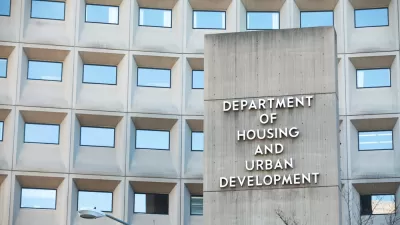Pro-development advocates have a new study to back up their cause.

Laura Kusisto shares news of a recent addition to the body of research that makes the case against land use regulation. First, the context for the article:
In this year’s election, candidates have focused blame for rising income inequality on broad economic forces, from globalization to the decline of the American manufacturing base. But a growing body of research suggests a more ordinary factor: the price of the average single-family home for sale, from Fairfield, Conn., to Portland, Ore.
Prior to detailing the new research, Kusisto employs an anecdote from the city of San Francisco, where developer Patrick Kennedy is attempting to get approval for an apartment complex near the city's financial district. A rule that would limit the number of units—both market rate and affordable, has Kennedy willing to turn a memorable phrase: "There are a lot of ways you can have modern-day Jim Crow through zoning," he says.
Kusisto's main purpose is to introduce research by Daniel Shoag, an associate professor of public policy at Harvard University, and Peter Ganong, a postdoctoral fellow at the National Bureau of Economic Research, into the discussion about housing supply and land use regulation. The research "looked at mentions of 'land-use' in appeals-court cases and found the number of references began rising sharply around 1970, with some states seeing a much larger increase than others." This, explains Kusisto by way of explaining the study, "while such efforts are well intentioned, they are having an unintended side effect: increasing social stratification between wealthier and poorer areas."
The article includes evidence from the study of high-regulation, wealthier states stagnating, while low-regulation states have continued to speed ahead.
[The article might be behind a paywall for some readers.]
FULL STORY: As Land-Use Rules Rise, Economic Mobility Slows, Research Says

Maui's Vacation Rental Debate Turns Ugly
Verbal attacks, misinformation campaigns and fistfights plague a high-stakes debate to convert thousands of vacation rentals into long-term housing.

Planetizen Federal Action Tracker
A weekly monitor of how Trump’s orders and actions are impacting planners and planning in America.

Chicago’s Ghost Rails
Just beneath the surface of the modern city lie the remnants of its expansive early 20th-century streetcar system.

Bend, Oregon Zoning Reforms Prioritize Small-Scale Housing
The city altered its zoning code to allow multi-family housing and eliminated parking mandates citywide.

Amtrak Cutting Jobs, Funding to High-Speed Rail
The agency plans to cut 10 percent of its workforce and has confirmed it will not fund new high-speed rail projects.

LA Denies Basic Services to Unhoused Residents
The city has repeatedly failed to respond to requests for trash pickup at encampment sites, and eliminated a program that provided mobile showers and toilets.
Urban Design for Planners 1: Software Tools
This six-course series explores essential urban design concepts using open source software and equips planners with the tools they need to participate fully in the urban design process.
Planning for Universal Design
Learn the tools for implementing Universal Design in planning regulations.
planning NEXT
Appalachian Highlands Housing Partners
Mpact (founded as Rail~Volution)
City of Camden Redevelopment Agency
City of Astoria
City of Portland
City of Laramie





























